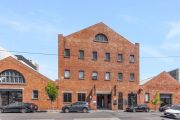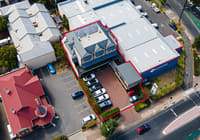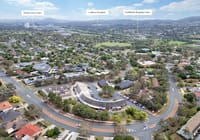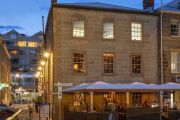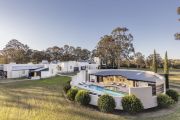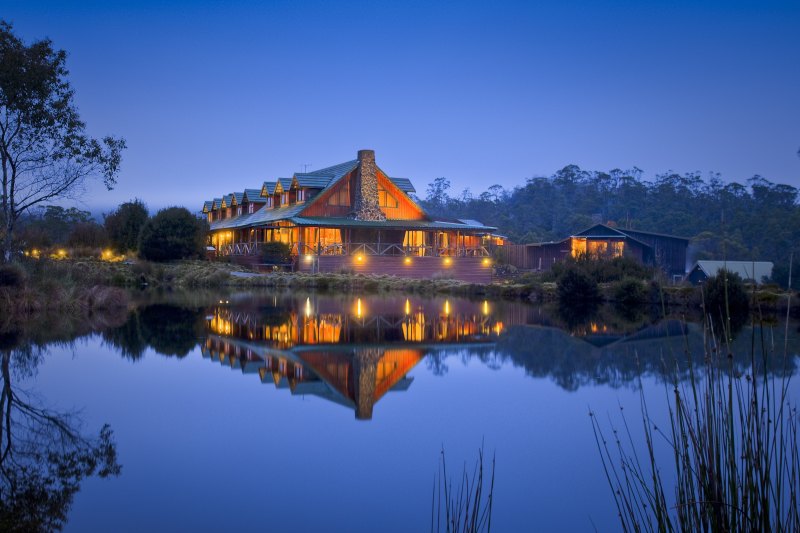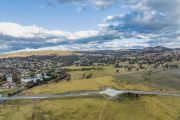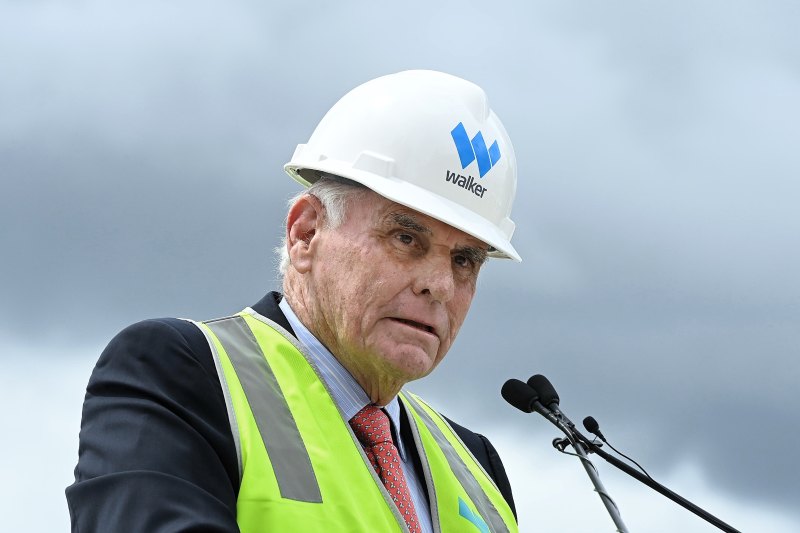
Lang Walker: builder of skyscrapers with feet firmly on the ground
One January in the late 1990s, Lang Walker took a day off from skiing in the wealthy US resort of Aspen – he was a competitive sportsman – and invited me to view some ranches suitable for a millionaire in the Roaring Fork Valley.
One Rocky Mountain ranch stood out, with a double height living area, lots of antlers on the walls, and three kitchens – one commercial-scale operation for staff, one for the guests, and one for the family just in case they wanted to make a coffee.

What did Lang think? “Over the top,” he said succinctly.
For all his wealth, Lang Walker, the legendary property developer and investor who died on Saturday, remained very grounded. It was one of the keys to his success.
In 50 years, from a very modest start in earth moving, Lang created a $36 billion development pipeline and a $9 billion portfolio of prime assets in Sydney, Melbourne and Adelaide.
In Queensland, Walker Corporation developed the Hope Island Resort and is now working on the Maroochydore City Centre; the Melbourne investments include Collins Square. And in Sydney, Walker has a legacy of city-shaping projects like Woolloomooloo Wharf and Rhodes Waterside.
But the numbers only tell part of the story. The outpouring of testimonials and personal stories since Saturday tell how Lang did it.
Lang Walker’s career explains why it is so hard to institutionalise property development. It requires vision, the courage to make the big calls, and then to deliver – on time and better than on budget – through planning and marketing to finance and construction.
He will long be remembered for the big calls. For creating gems out of problem sites like the Broadway Sydney shopping centre or the $2.5 billion Parramatta Square, or seeing the potential in Festival Tower and the Riverlea Estate in Adelaide when few outsiders would consider South Australia.
Mirvac founder Bob Hamilton, no slouch himself in this game, said Lang was the “best judge of property that I have seen”.
“He knew when to get in and when to get out,” Hamilton said, referring to Lang’s legendary ability to sell his business, first as an IPO in 1994 – it never traded above its IPO price and the unhappy investors sold to Australand five years later – and then, again when the Walker portfolio was sold ahead of the GFC for more than $1 billion.
It seems simple in hindsight, but it’s not. Such a business can only be sold when the market is still rising. Once it turns, the demand evaporates. Until it turns, the seller has to endure the taunts of those mates who say it was sold too cheap.
Of course Lang was tough. Very tough. And decisive.
He made enemies, including Paul Keating, who as Treasurer and a Sydneysider with a vision for the harbour, wanted the Woolloomooloo Wharf removed, and certainly not reworked with the extra luxury apartments that Lang negotiated through planning to make the whole project worthwhile.
I also remember one long-departed NSW planning minister telling me over lunch how hard it was dealing with Lang and his relentlessly aggressive negotiation style.
But this week Stace Fishwick, an executive director at the NSW Government’s Property & Development NSW posted that the relationship with Lang over Parramatta Square – in which the government is a major tenant – quickly became a “partnership and a friendship”.
“We had debates, in-depth discussions, but the respect, listening and solution focus was second to none [and] the results were outstanding, as was his contribution to the property industry and our cities,” he wrote.
As a property writer, I meet lots of blow hards. That wasn’t Lang. From the time I met him at his then headquarters above a shop in Oxford Street, I always found him respectful – he had what some call an old school manner – with an interest in the media and the wider world.
One of his bankers, and perhaps one of the few people apart from his father to call him Langley, was the ANZ’s former global head of institutional property, Eddie Law.
He remembers Lang as a “fierce negotiator in pursuit of the most advantageous funding for the most visionary of projects”.
But he stressed, “the negotiation was always carried out in the good faith and always with a healthy application of the human touch”.
“Lang was more than a former client; he was a good human who I was privileged to regard as a friend. When I left the ANZ, he took me to lunch for three hours and focused the entire lunch on me. He didn’t have to do that.”
Marco Rossi, the chairman of Built, which delivered construction for Walker for 15 years including Parramatta Square, has a similar view.
“Lang understood property development and construction intrinsically, was across every detail, and not afraid to pick up the phone and let you know how he felt,” he said.
“He had the ability to bring out the best in you and achieve things, beyond what you could conceive. He was always tough, but fair and understood how to provide client leadership that ensured project success for all stakeholders that pulled their weight.”
For Built, the work came with an extra advantage. “As we delivered for Lang the market took notice and said, ‘well if they can make Lang happy they must be good!’ ”
Andrew Parsons, now the chief investment officer at global listed real assets securities manager, Resolution Capital, was part of the team on the Walker Corp float in the 1990s and remembers Lang as “charming, but often gruff and certainly matter of fact”.
“He was gritty and hard-nosed, and that inspired confidence when many of the flamboyant characters went bust in the crash. He was about keeping costs down, developing to a price point, and identifying under-appreciated locations.”
Tim Church, Morgan Stanley’s chairman for investment banking in Australia, worked with Lang on a number of projects including Melbourne’s Collins Place.
“Lang was a property industry legend but he never lost the common touch; he was as comfortable in the boardroom as he was on site with his construction workers,” Church said.
In an age of spreadsheets and internal rates of return, that common touch gave Lang an instinctive understanding of what business, or home buyers, wanted, and how much they would be able to pay.
Years before COVID-19 he recognised that business and government were moving away from high-cost offices in the CBD, a recognition that drove his investments in Parramatta, western Sydney and the Sunshine Coast.
This week the Walker family expressed their gratitude for the “tremendous outpouring of compassion and tributes” that followed Lang’s death.
They will hold a private funeral and suggest those who would like to recognise Lang further could donate to the St Vincent’s Curran Foundation or the Youth Insearch program.

